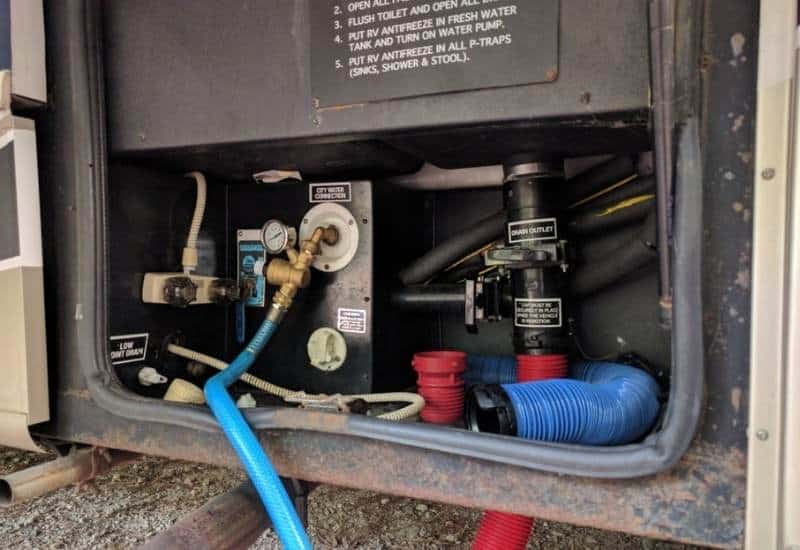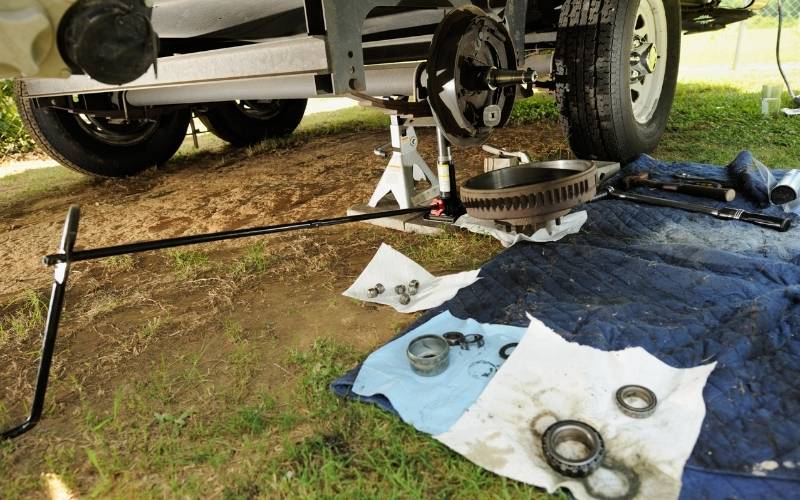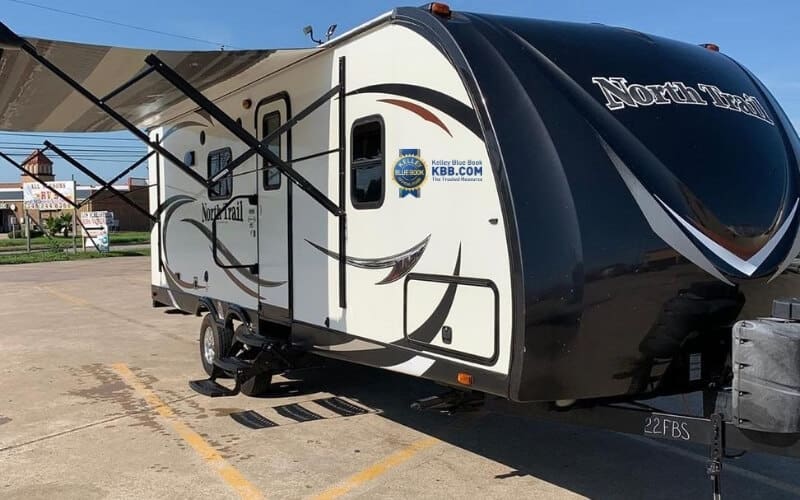RV plumbing is different fromwhat’s found in brick-and-mortar homes. To accommodate travel, RVs utilize a holding tank system, and learning to use it properly is an important step towards understanding the ins and outs of your RV.
An RV gray water tank is one of three tanks that make up a standard RV septic system. It holds the majority of liquid waste that’s expelled from the RV, and requires some special care and attention to keep it functioning properly.
From avoiding smelly messes to legally disposing your gray water, this ultimate guide outlines everything you need to know about your RV gray water tank.
1: What is a Gray Water Tank and What Does It Do?
An RV gray water tank collects all of the water that washes down sink and shower drains, as well as any water from appliances like washing machines or dishwashers. Simply put, gray water collects from everywhere except the toilet.
Although some vintage campers may not have a gray water tank, it is a standard feature in most motorhomes and trailers.
2: What Happens When the Gray Water Tank is Full?
When the gray water tank is full, it means that any additional water washed down drains has nowhere left to go but to backup out of the pipes and sit in the basinet of the lowest drain.
Some new RVers may learn this the hard way when the water in the suddenly stops draining. Or perhaps they smell a foul smell as they’re doing the dishes, only to discover a puddle in the bathtub.
Water backing up into your RV is not a big deal when caught early on. However, it can leave behind a film of soap scum, dirt, and oils, and it runs the risk of flooding your RV if overlooked for too long.
3: How Often Should You Dump Your Gray Water Tank?
On average, you should dump your gray water tanks two to three times per week. Of course, long showers and other heavy water usage can fill up gray water tanks much more quickly. Alternately, those who learn to conserve water and only use what is absolutely needed may be able to go a week or more before needing to empty their gray water tank.
How often you should dump your gray water tank will depend on the following factors:
- How big your gray water tank is
- How much water goes down the drain (How many people are using water in your RV? How conscious is everyone about how much water they use?)
- Whether you’re traveling or stationary
When staying stationary for a while, it is often easier to leave the gray water tank valve open while connected to a drain.
This allows you to use water as needed without running the risk of it backing up.
Regardless of how often you have to empty your gray water tank, a good rule of thumb is to wait until the gray tank is around two-thirds full.
This ensures a good flow of water that can help wash out any accumulated particles and grime.
4: How Do You Know When Your Gray Water Tank is Full?
There are several ways to know when your gray water tank is full, some more favorable than others.
Although you know the tank is full once it overflows, it is better to regularly check your tank levels and to learn your water use habits.
Many first time RVers learn about gray water tanks the hard way. A funny smell may suddenly appear, only to find standing water backed up in the shower.
This is easily fixed by opening the valve and emptying the gray water tank, but the smell and slimy film that gray water leaves behind is better to avoid.
Here are couple of ways to tell if your black tank is almost full.
1: Sensors Measure Liquid Levels
In order to empty your gray water tank before it overflows, most RVs have sensors that will give you an approximate tank level.
Check the gray tank sensors once or twice a day, depending on how many people are using water in the RV, and empty the tank as needed.
2: Experience Teaches You Your Habits
It won’t take much time for you to develop a sense of how long it takes you and your fellow travelers to fill up your gray water tank.
Tank sensors can get dirty and may not always ready correctly, but most seasoned RVers already know about how long they can go before needing to empty their gray water tank.
In fact, one of the great things about living in an RV for a time is the necessary consciousness about how much water we use for all of our daily tasks.
5: Can I Dump My Gray Water on the Ground?
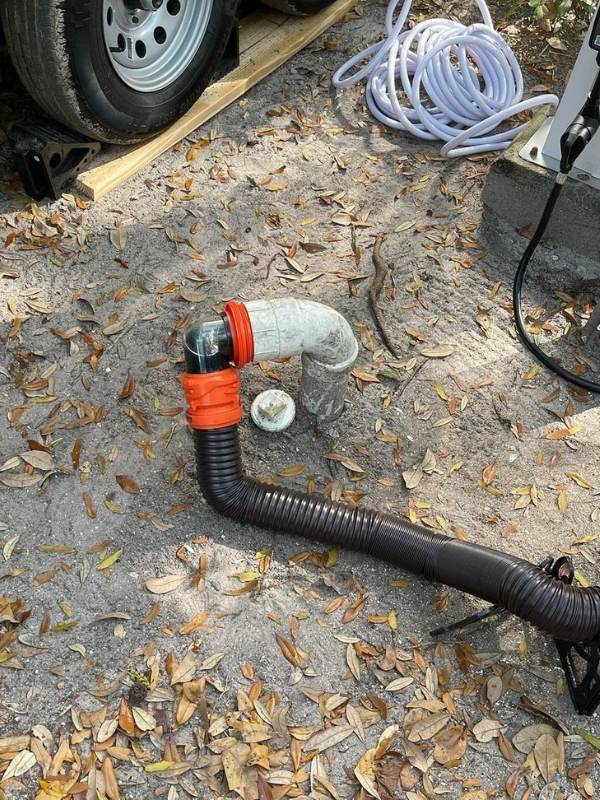
The only areas where you can dump gray water on the ground are on public BLM lands. Otherwise, you’ll have to find a designated dump station. Disposing of gray water on the ground is not permitted in most places for a number of reasons, including the following:
When in doubt, it is best to assume that you shouldn’t dump your gray water on the ground.
And if you do camp on public BLM lands where you are permitted to dump your gray water on the ground, be sure to do so mindfully.
Never let anything go down the drains that could be harmful to the environment, and always dump your tank away from water sources and other campers.
6: Where to Dump Your RV Gray Water Tank?
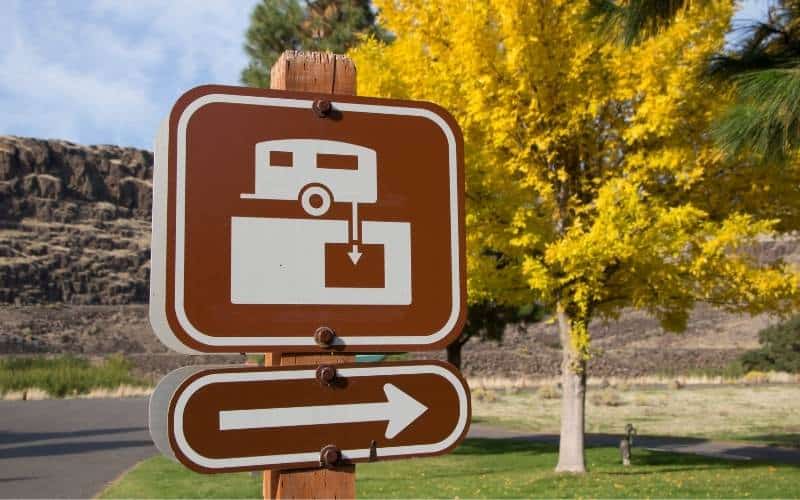
In most circumstances, you should dump your RV gray water tank at a designated dump station.
Dump stations are made to facilitate both black and gray water tanks, and can often be found at the following locations:
If you need help finding a location, there are also plenty of apps and websites that can help you locate dump stations near you.
7: How to Dump Your RV Gray Water Tank
Dumping your RV gray water tank is a simple process that just takes some practice.
Below is a step-by-step guide outlining how to dump your RV gray water tank, along with a few useful tips to help you become a pro in no time.
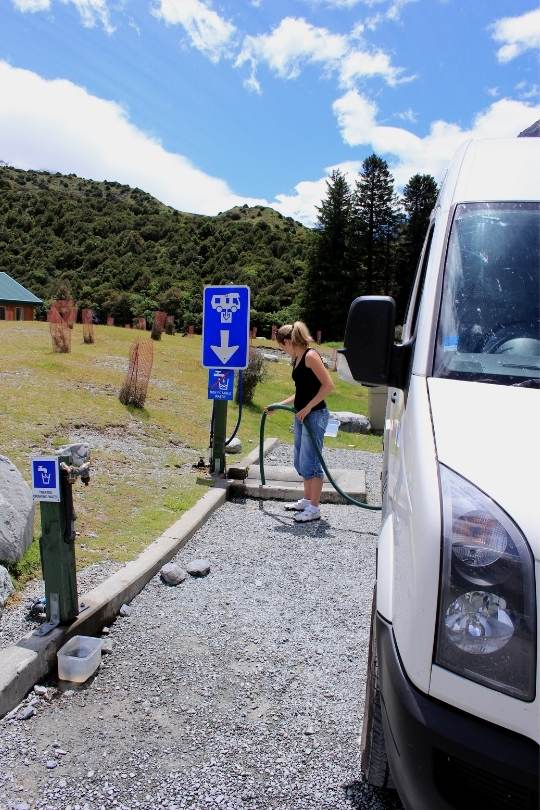
8: What is RV Tank Flushing?
RV tank flushing is completely cleaning out gray or black water tanks to get rid of buildup.
This should be done on a regular basis to keep tank monitors working properly and to avoid unwanted odors from creeping into the living spaces.
9: How Do I Clean My RV Gray Water Tank?
Cleaning your RV’s gray water holding tank periodically helps the tank sensors work better, and it should be done before your RV toilet start smells like a sewer.
Luckily, cleaning out the gray tank and sensors is far more simpler than cleaning the dreaded black water tank.
Here are couple of ways to clean your black and gray tank so they don’t smell gross.
Use Conventional Cleaners To Break Down Gray Water Holding Tank Waste
Using cleaning solution is the easiest and best way to clean your RV gray water tank is while you’re on the road.
The tank should be around half to three-quarters full — completely covering the bottom of the tank where most of the buildup sits, but leaving enough room for the liquids to slosh around in the tank.
Pour a cleaning substance such as RV safe dishwasher detergent gel or water softener down the drain, rinsing it down well with hot water.
Go on your drive and let the liquids slosh around in your tank.
The detergents will loosen and remove any buildup from the tank as you drive and will be ready to flush out when you open the tank.
Just be sure to check that your destination has a designated dump station!
Pressure Washing Your RV Gray Holding Tank
Those looking for an alternative to cleaning agents, or who wish to clean their gray water tanks without having to drive anywhere, may instead consider flushing their RV gray water tanks with a pressure wash.

This is done using water to spray the inside of the tank. While it may take time to loosen any stubborn buildup, rinsing the tank this way will loosen pre-existing buildup and help prevent it in the future.
To apply the needed amount of water pressure to rinse the gray tank tank, you can use either a flush valve or a tank rinser.
10: How Do I Maintain My RV Gray Water Tank?
Once your gray water tank is flushed out, maintaining your RV gray water tank will keep it clean and odor-free.
There are liquid and drop-in treatments made especially for this, all you have to do is use them as directed.
Drop-in treatments include scoopable powder, tablets, and pouches that don’t require any measuring or mess.
While liquid treatments need to be measured to their recommended use, they work just as well. Specialized liquid treatments made to fight buildup are also available.
F.A.Q.’s About RV Gray Water Tanks
RV septic systems take some getting used to, but understanding how they work will clarify how to use them.
Let’s take a look at some of the most frequently asked questions about RV gray water tanks.
What’s the Difference Between Gray Water and Black Water?
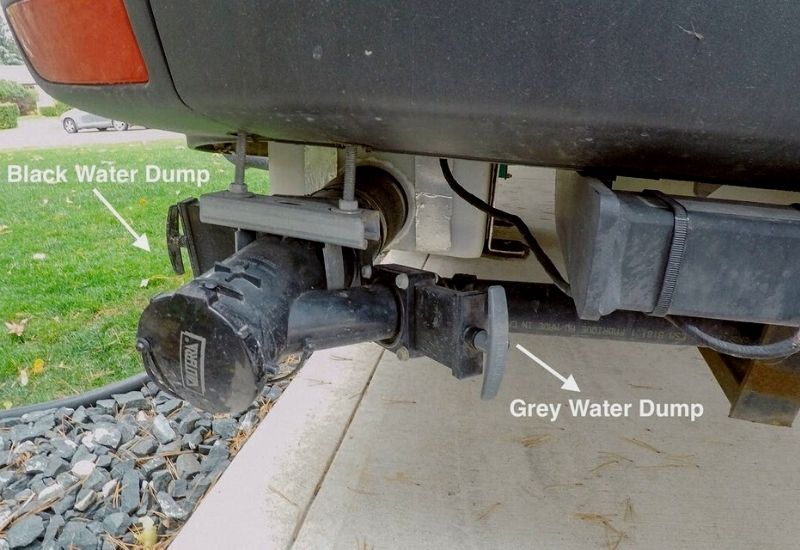
The difference between gray water and black water is where it comes from.
RV gray water is the used water from baths and showers, sinks, and appliances like washing machines and dishwashers. It is generally non-toxic and may sometimes be reused to water plants.
On other hand, black water is everything that is sent down the toilet. The combined accumulation of human excrements is significantly more toxic than gray water, and is thus kept separate to avoid contamination.
Black water should only ever be emptied at designated dump stations.
How Accurate are Tank Monitors?
Tank monitors use sensors inside of the tanks to give you an approximate water level.
However, tank monitors have a tendency to stop working correctly over time as buildup formsin the tank.
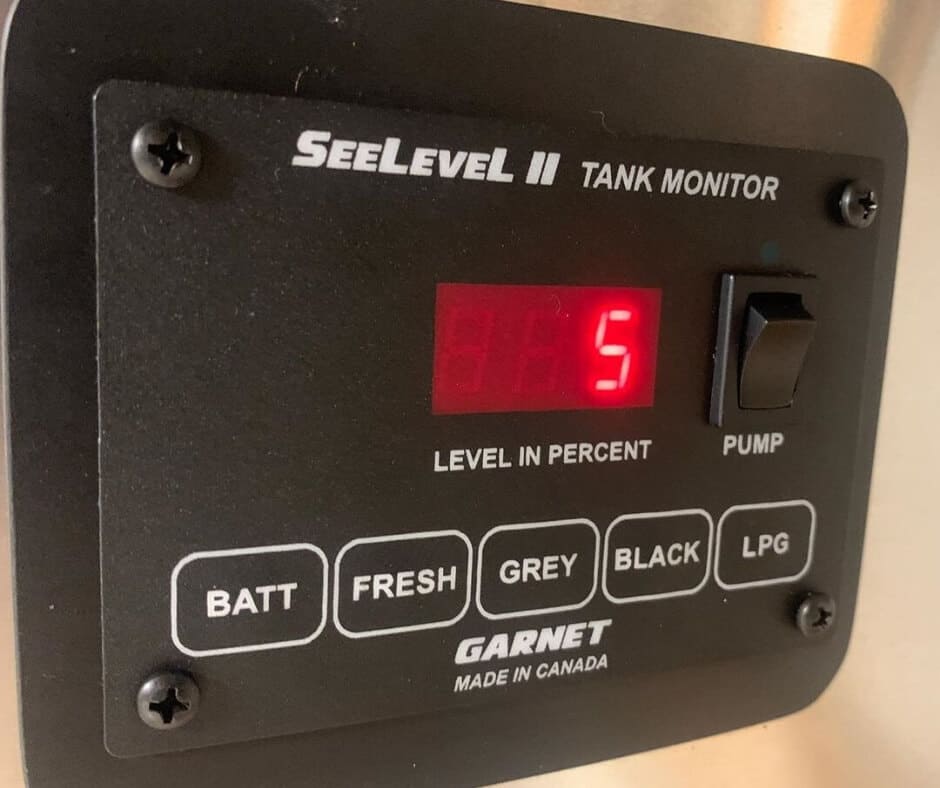
If you notice that your tank monitors aren’t accurate, it is probably time to give your tank a good flush.
Sensors inside the tank read the water level, but when these get covered in grime, the reading will no longer be accurate.
It may take several flushes to fully restore your tank monitors to working order. If multiple flushes don’t do the trick, you may want to consider replacing the in-tank sensors.
Why Won’t My RV Gray Water Tank Drain?
If your RV gray water tank won’t drain, you likely have a clog somewhere in either the pipes or the tank caused by hair, food, or some other buildup.
Although harsh chemicals made for conventional plumbing can damage RV septic systems, there are a number of other ways to clear a clog.
1: Hot Water Can Do The Trick
Boil a few pots of water, pour them down the drains, and let sit. Hot water will loosen and break up minor clogs caused by hair and oils.
If it seems to be working, but isn’t completely clear, try a second round after several hours. If hot water doesn’t seem to do the trick, you may be in need of something stronger.
2: Try Drain Clearing Solutions
When hot water doesn’t clear the clog, you may need a specialized drain clearing solution to do the job. This can either be store-bought, or it can be made from a few common household ingredients.
If you choose to buy a product from the store, be sure to only use environmentally friendly solutions like Energen natural grey water tank treatment.
Harsh chemical cleaners are bad for the environment, and they can damage RV septic systems. Consider using an oil-fighting dish soap or a water softener to loosen grim and buildup instead.
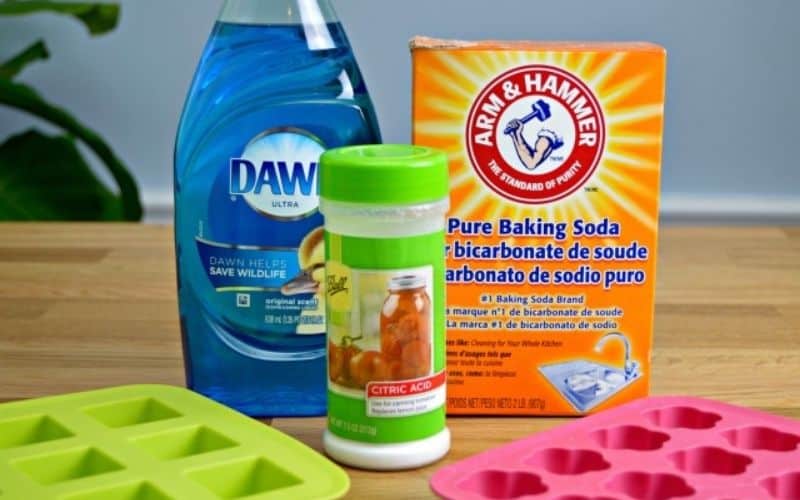
There are also several DIY drain clearing solutions that can be made with products found in most kitchens. One of the most popular solutions is pouring baking soda and white vinegar down clogged drains.
Their combined reactions will bubble up and eat away at hair, soap scum, and other buildup. This can be repeated as needed, then washed down with hot water.
4: Use Plungers and Snakes To clear clogs
If hot water and drain clearing solutions still aren’t cutting it, you may have to clear the clog manually with a plunger or drain snake.
Be sure to only use manual devices so as not to damage RV pipes or tanks. Keeping a flashlight and tweezers handy may also assist you in clearing pesky hair and debris.
5: Get A Flush Valve To Break Down Waste
A flush valve can blast out any buildup. Use it in combination with hot water or a specialized solution to help clear a clog.
Otherwise, use it after clearing a clog with a plunger or snake to get rid of any remaining residue inside your gray tank.
6: Seek Some Professional Help
When in doubt, get professional help. While RV drain clogs are generally easy to clear, it is sometimes better to have a professional who knows their way around RVs take a look before we any accidental damages occur.
Break Down Waste And Get Rid Of Smells
Along with regular treatments, the easiest way to maintain your RV tanks is by being mindful of what goes down them.
The less that goes down RV drains, the less chance of buildup. Hair catchers and sink strainers help catch unwanted substances from going down drains, and some good RV habits will make you a pro at maintaining your RV gray water tank.

